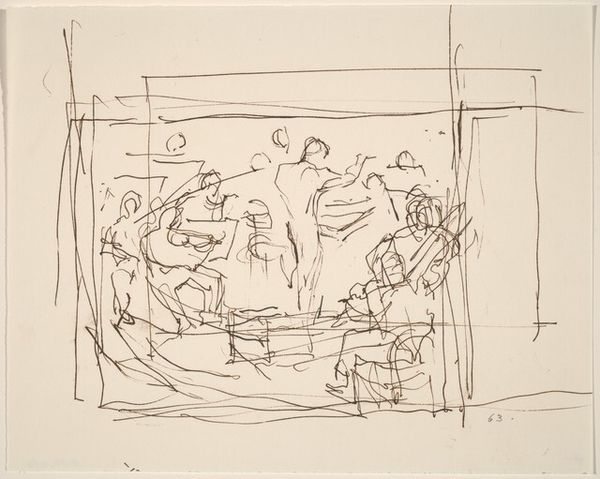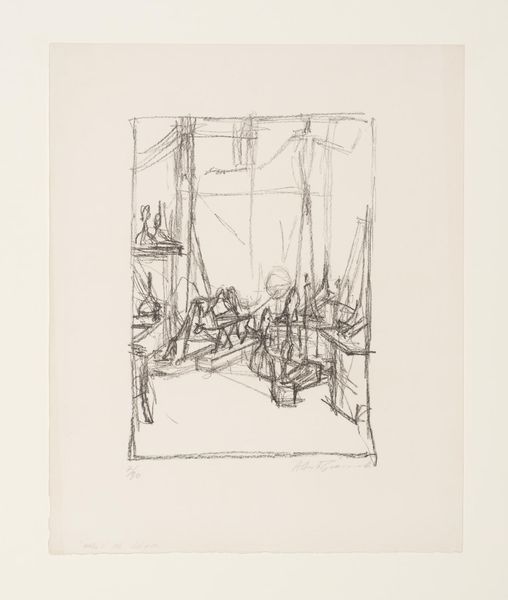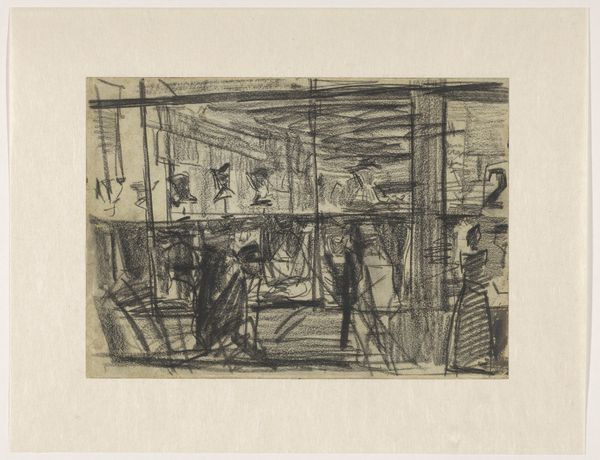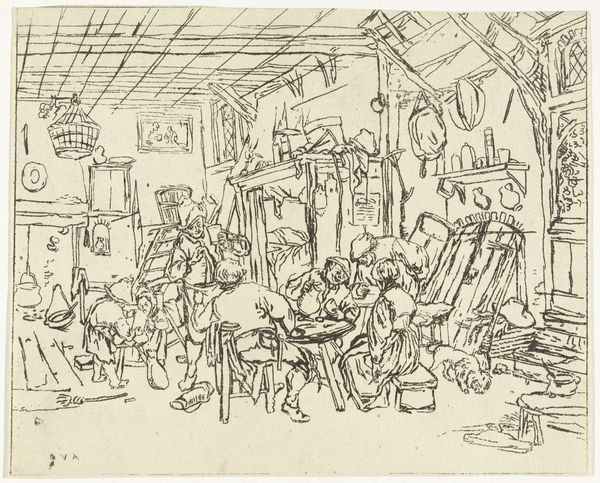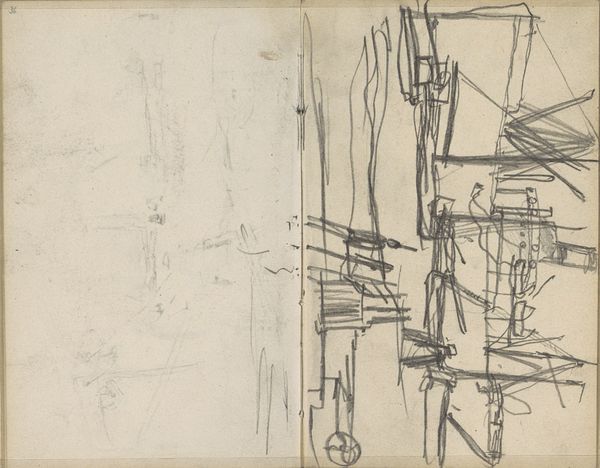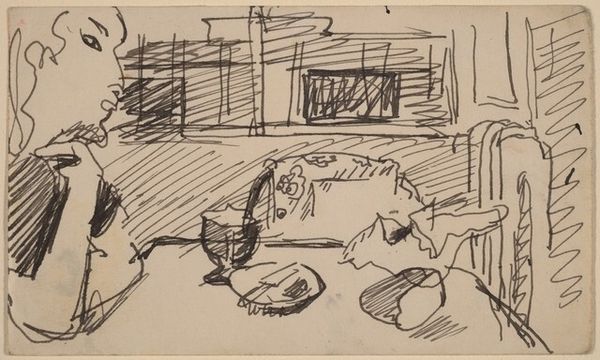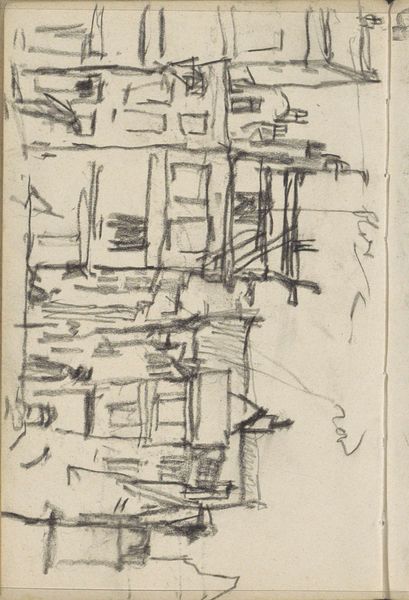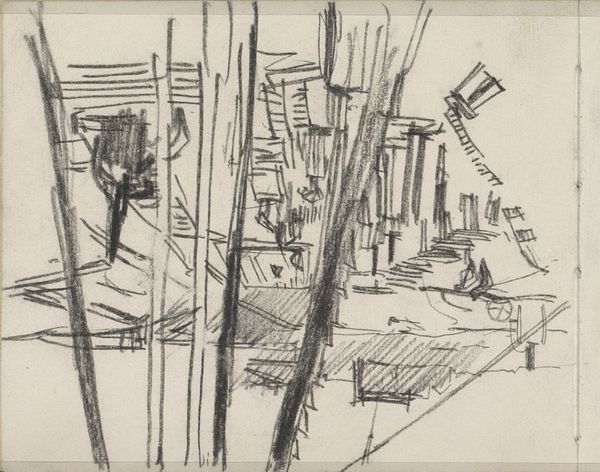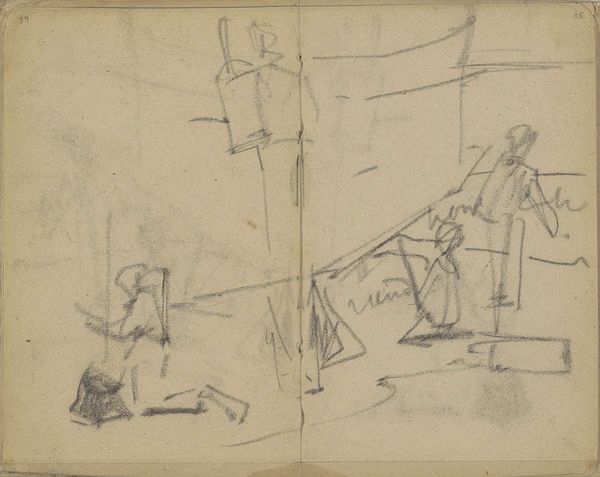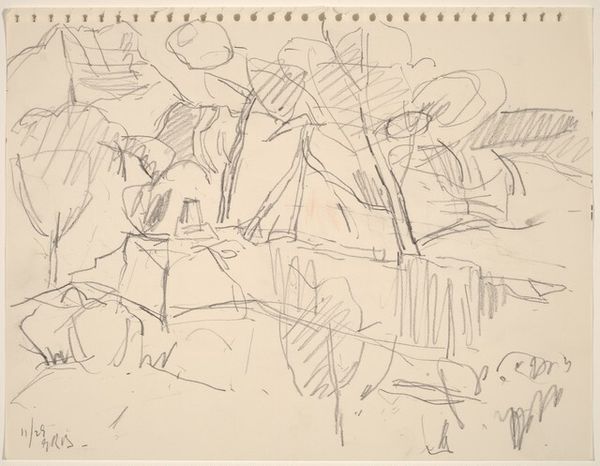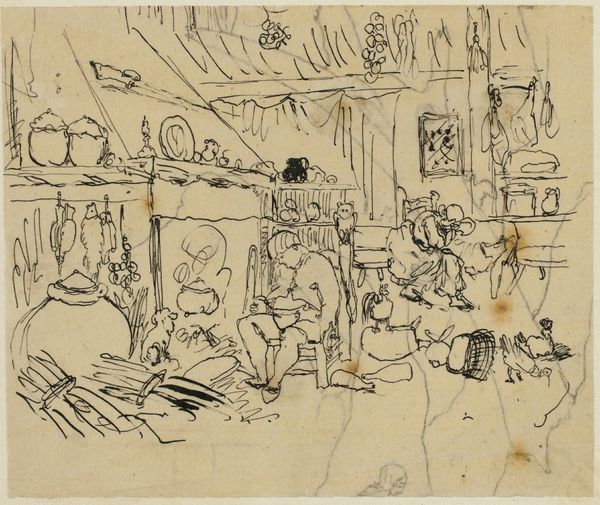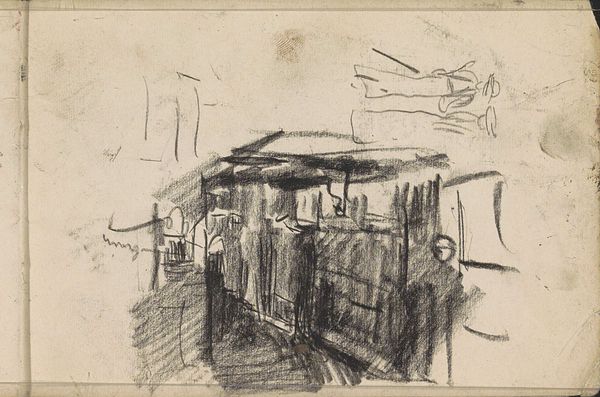
drawing, print, graphite
#
drawing
# print
#
abstraction
#
graphite
#
modernism
Dimensions: image: 36.83 × 52.71 cm (14 1/2 × 20 3/4 in.) sheet: 50.48 × 65.41 cm (19 7/8 × 25 3/4 in.)
Copyright: National Gallery of Art: CC0 1.0
Curator: "Studio II (Atelier II)", created by Alberto Giacometti in 1954, a graphite drawing that’s also considered a print, seems to show a collection of sculptures within a workspace. I'm immediately drawn to the almost chaotic layering of lines. How do you see this piece, especially concerning his artistic process? Editor: The linear quality definitely feels raw and immediate. The lines create depth, but the space still appears flattened. Considering this work is called 'Studio II,' I'm curious about the physical studio where he worked, how that space shaped his materials. Can you elaborate on that relationship? Curator: Certainly. The graphite acts as both a tool for depiction and a direct record of the artist's hand, highlighting the physical act of creation. The medium becomes less about representation and more about documenting labor. What do you notice about the objects and figures in the composition themselves? Are they polished finished works, or do they feel more like sketches? Editor: They certainly appear like sketches. It looks as if he is examining the process of art creation, a reproduction that gives rise to yet another reproduction. Curator: Exactly! This approach blurs boundaries, doesn't it? Consider that his sculptures were often elongated, roughed textures suggesting constant reshaping of material; the lines in his drawing seem to mirror this tension. It all comes down to what the materials *do* within that studio space. It prompts one to question the art status of a seemingly unfinished artwork and to view the studio as itself, a site of material practice and knowledge production. What might you take away from Giacometti’s Studio II? Editor: I see how his artistic process emphasizes labor and challenges art consumption. Thanks. It highlights how closely intertwined the finished product is with the physical workspace. Curator: Precisely. And it reframes the studio not just as the origin of art, but as a subject worthy of artistic exploration itself.
Comments
No comments
Be the first to comment and join the conversation on the ultimate creative platform.
